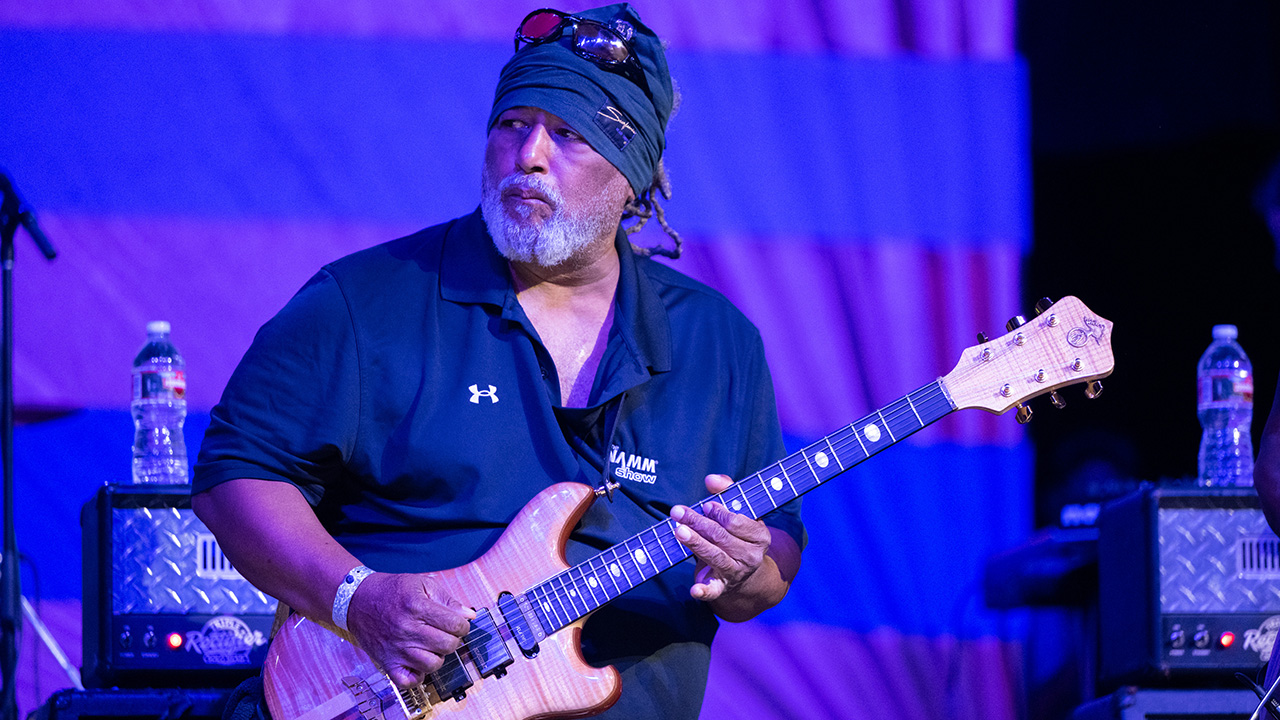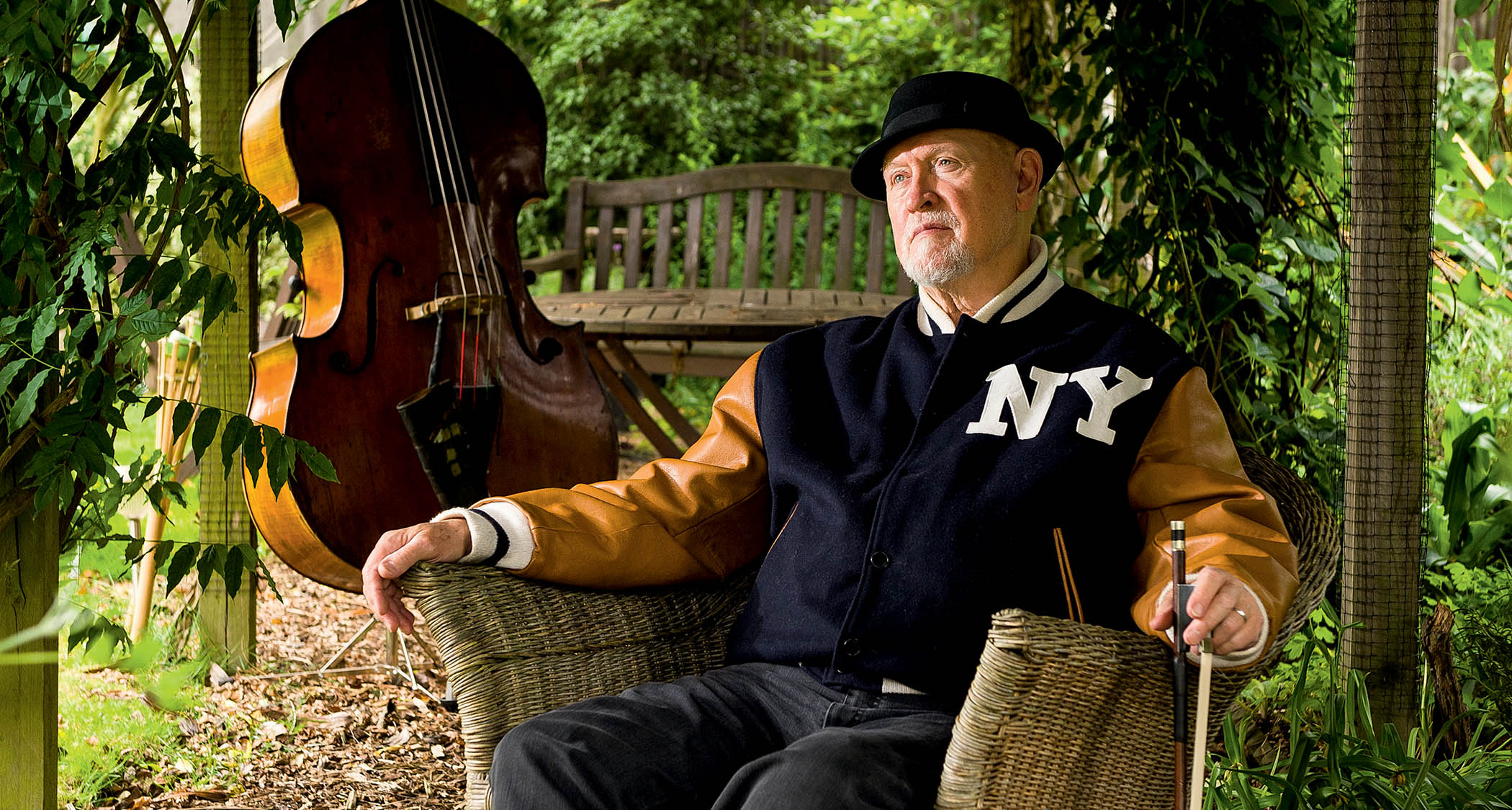“People tell me I’m one of the godfathers of shredding… I don’t know. I play loud, aggressively, and with some flair. I’m just out there doing me”: Did Michael Hampton really land his P-Funk gig by playing Eddie Hazel’s Maggot Brain solo note for note?
Parliamant/Funkadelic’s ‘Kidd Funkadelic’ explains how his disinterest in sports and love of jazz guitar prepared him for the gig – and the difference between playing with Hazel and Blackbyrd McKnight

If you’ve seen Parliamant/Funkadelic live any time from 1975, the odds are you witness the funky yet shreddy antics of the collective’s longest-running lead guitarist, Michael ‘Kidd Funkadelic’ Hampton.
The longstanding rumor is that he entered George Clinton’s midst as a teenage sensation who blew the competition away after playing Eddie Hazel’s iconic Maggot Brain solo note for note.
Hampton – a Cleveland native who grew up loving rock, jazz and blues – won’t cop to that. Instead, he’ll probably tell you that he simply did his best to harness the heart and soul of what Hazel did.
Whatever he did, it worked. and in the years since he’s become a part of records like Let’s Take it to the Stage (1975), Tales Of Kidd Funkadelic (1976) and One Nation Under A Groove (1978).
Despite his undeniable influence, Hazel’s name is usually spoken first when it comes to P-Funk. Hampton serves up the goods alongside heaping does of free-spirited humility. “I do what the songs calls for,” he tells Guitar World. “But I also just kinda go with it.
“I try and stay true to whatever the feeling is. Anybody out there listening to the parts knows that I’m trying to get good as being dead-on accurate. But when we do it live, it ends up being about the essence, improving off that, and just keeping it, like, old school.”
What inspired you to pick up the guitar?
All the latest guitar news, interviews, lessons, reviews, deals and more, direct to your inbox!
“Messing around with it came from messing around with my friends sometimes. We’d have a piece, like a single line, and I got into it because I thought it was something I wanted to do. I was never into sports; and with, like, peewee baseball, I wasn't fast enough, so I listened to a lot of music when I was young.”
When did it go from just messing around to something you thought you might like to do as a career?
“I got more and more comfortable with guitar where I could hear what was going on. I just started practicing more; I’d play little single-line stuff, and the whole time, I would always be listening to music. I just sorted morphed into it.”
Were there any specific guitarists that influenced you?
“I had a teacher for about three months, and he showed me jazz guitarists. A lot of people inspired me, like Wes Montgomery, B.B. King, Albert King and Robert Johnson. I don’t think I even knew who a guy like Robert Johnson was exactly; I just listened and became versed in a lot of that stuff. I also listened to Wilson Pickett and Deep Purple.”
Is it true that you joined P-Funk after nailing the Maggot Brain solo note for note?
“The whole story starts in Cleveland. Funkadelic was doing a show at the Public Hall Auditorium. After the show, this older guy would throw these parties for the band. He knew the guys and that they needed a guitar player. So after the show, at the party, he goes to me, ‘Play Maggot Brain, record it, and we’ll give it to them. Good luck.’
“But the note-for-note stuff, I can’t say that’s true. I tried to do it as close as I could to the record; I’d played the album, learned it and practiced it, so I could play it from my memory close enough.
“But as far as the note-for-note stuff: there are so many nuances. Even today, there’s little nuances that Eddie did, and I can get close, but it’s about trying to capture the feeling.”
Was that generally how you approached most of Eddie’s licks after you joined?
“My live version of Maggot Brain, for some people, that’s the only version they know. The one I did was based off the original – but sometimes I like to switch it up. I do that during live shows: I’ll add to it and then I’ll edit it in real time.
“You start off trying to do it like the record and then it morphs, and it’s about getting the audience revved up. And pretty soon I’ll say, ‘Okay, I want to keep there,’ and I’ll be looking back at George, saying, ‘Where are we going with this?’ so it’s never quite note for note.”
Considering you were following the great Eddie Hazel, how did you approach the P-Funk gig?
I play loud, aggressively, and with some flair. I wanted to be funky but hold down the rhythm
“It’s hard for me to remember specific things, but I know I used Marshall amps. When I got into the studio they had a stack of Marshalls in there, and I was using fuzz, wah and pedals, and an Alembic guitar Series I. They had this huge room, and it was pretty much Marshalls, a Fender Twin, and I think there was a B.C. Rich Bich there too.”
Eddie ended up coming back, and you played alongside him. Was it difficult to find space alongside him?
“It would be a little tricky because he wasn’t trying to follow the way the song goes. He did his thing and set a mood by starting low and coming up high. He’d do his version and then after he was finished, and got everything off, I’d come in. I’d start from the top again and give the gist of whatever the original was, and then we’d meet at the end of it and we’d trade off.”
How different was playing alongside Blackbyrd McKnight?
“With Blackbyrd, I’ll do whatever song I played on, and he’ll usually do whatever songs he played on. I’m good with that; I’ll try and see where I fit in. I was always trying to double it or work off it and maybe put something funky on top, but not too much. I always try to do the best I can and be a team player.”
At its core, P-Funk is a heavy, guitar-driven funk band, and you’re a big part of it.
“Really, I never thought about that. But as far as measuring it, a lot of people have told me that I’m one of the godfathers of shredding and metal. I don’t know about that. As far as my style, I play loud, aggressively, and with some flair. I wanted to be funky but hold down the rhythm. I keep it straight like that; I’m just out there doing me.
“If I didn’t do the original part, you’ll get that plus whatever I add to it. People have said they could tell a difference when I’m not there. I’m not quite sure what that is other than the fact that I'm really trying to pay attention to the details from the recordings.”
- Follow Hampton on Instagram.
Andrew Daly is an iced-coffee-addicted, oddball Telecaster-playing, alfredo pasta-loving journalist from Long Island, NY, who, in addition to being a contributing writer for Guitar World, scribes for Bass Player, Guitar Player, Guitarist, and MusicRadar. Andrew has interviewed favorites like Ace Frehley, Johnny Marr, Vito Bratta, Bruce Kulick, Joe Perry, Brad Whitford, Tom Morello, Rich Robinson, and Paul Stanley, while his all-time favorite (rhythm player), Keith Richards, continues to elude him.

